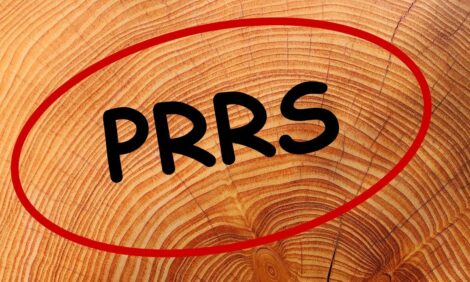



Biosecurity for Organic Livestock Producers
Practical tips on everything from property planning to day-to-day management by Karen Omalley of IDO Organic Farming in a factsheet from News South Wales Department of Primary Industries.Biosecurity means 'safe life' and is the protection of people, animals and the environment from infectious disease, pests and other biological threats like invasive weeds. Additionally, for organic farmers, good biosecurity will help prevent chemical or GMO contamination and loss of certification.
Managing an organic farm requires farmers to plan and prepare actively for possible risks in the future. Certified organic farmers are obliged to keep good records of farm activities, stock history and to demonstrate a commitment to animal welfare. A robust biosecurity system is vital to this activity.
In its active form, biosecurity is a set of habits designed to reduce the risk of introducing diseases or contamination of the farm environment.
A disease or parasite outbreak can be economically damaging, distressing and badly affect animal welfare. Parasites and diseases can range from relatively mild and easily treated, like a case of internal parasites to the very serious such as an outbreak of an exotic disease like Foot & Mouth Disease, avian influenza or Newcastle disease.
A good biosecurity plan helps the farmer to identify and stop these possible threats very early; consequently, containment is less costly and cleaned up in limited time period. Once containment fails, a farmer can be stuck with costly remediation and possibly ongoing long term expenses in maintenance control.
Many rural industry sectors have customised biosecurity plans recommending tried and tested techniques for each enterprise. These plans can be adapted to suit individual circumstance. Examples can be found here Farm Biosecurity manuals [click here].
Having your own farm biosecurity plan will mean you are prepared, with ready access to local resources and contacts organised. You and your employees will be more aware, confident and proactive in handling any problem straight away.
Regularly checking with specific industry body web sites will allow you to keep up with the latest industry recommendations and standards. Subscribing to e-bulletins and your local Livestock Health and Pest Authorities newsletters will alert you to potential problems in your district. Stay informed of local conditions – tighten biosecurity if needed.
In addition to the wider industry standards there are a few additional factors where organic farmers need to pay closer attention.
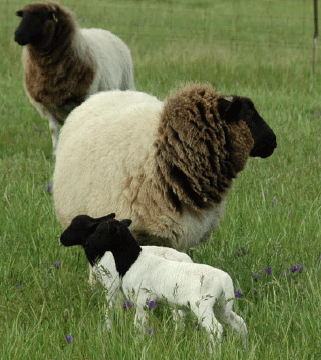
Property Planning
Biosecurity is an important part of an Organic Management Plan Identification and limiting the establishment of both endemic and exotic pests and diseases is a fundamental part of minimising the use of chemicals on-farm. Biosecurity is not limited to large-scale growers or producers. People on small rural landholdings (including hobby farms) need to play their part in preventing the outbreak and spread of animal and plant pests and diseases.
Good fences make good neighbours
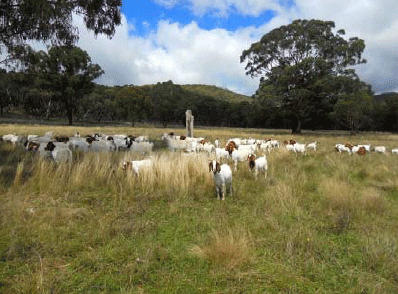
All the precautions in the world will not help you if
you do not have good fences. Good fences keep
your stock in, and other stock, which may spread
diseases and weeds, out.
Boundary fences should be inspected routinely to
ensure they are stock-proof, and repaired if
needed. Good internal fencing should not be
neglected as it backs the security of external
fences.
Stray stock may spread disease, as can feral
animals such as goats, pigs and deer. A feral
animal control plan is an important part of property
biosecurity. Where their paths cross, livestock can
be exposed to disease-causing agents carried by
wildlife.
If you find stray stock on your property,
immediately isolate them from other stock and find
the owner.
A Quarantine Paddock is Essential
Organic standards require quarantine areas to be
clearly identifiable on the farm and farm map.
As a standard practice for regular farm operations,
you need an isolation paddock for animals that get
sick or injured and need to be separated from the
rest of the herd or flock.
Quarantining new and sick animals allows you time
to do a proper assessment, apply any needed
treatments and prevent the spread of diseases to
healthy stock and the rest of your property.
It is important to quarantine new animals for at least
three weeks after they arrive on your farm. You should
also quarantine a new animal for its own health.
Being transported to a new farm is stressful for an
animal. Stress is known to lower immune function
so they are going to be especially susceptible to
parasites and other health challenges. It will also
give you the opportunity for close observation,
treating any problems and boosting the animal's nutritional health before it is released into the farm
system. Also, keeping new animals in one spot
allows time for weed seeds or veterinary products
to be expelled, before these are deposited onto the
property at large.
A quarantine paddock is best sited close to the
house or a working area of the farm. Also near to
the handling yards so that new stock does not
have to be walked through the rest of the farm to
get to the quarantine paddock. After new stock
arrive at the farm's handling yards, care should be
taken to clean and quarantine those yards from
other stock so they do not pick up diseases or
worms.
With some animal diseases the pattern of water
drainage from one paddock to another can be the
vector by which the disease is transported to other
animals. Design the quarantine paddock in a way
that water flow from the paddock is controlled or
flows away from paddocks containing other stock.
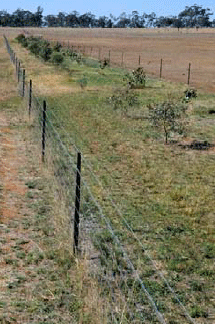
A double fence between the quarantine paddock
and the rest of the
farm will create a
barrier to prevent
nose-to-nose contact,
which can spread
diseases like
pestivirus. The two
fences need to be at
least three metres
apart. This buffer zone
can be used to
establish a small tree
and shelter belt to
provide animals with
good shelter and
minimise stress.
Water and feeding points should be easy to clean
thoroughly.
Once the quarantine paddock has been used to
quarantine stock coming onto your farm, it should
be rested or cropped for a period of time before
being used again for grazing. In other words, it is a
good idea to quarantine the quarantine paddock.
Introducing New Animals
Producers should purchase animals from sources
with a sound herd health program.
It is important to buy animals from herds or flocks
that are accredited free of certain contagious pests
or diseases or from farms whose disease status is
known. Preferably, replacement animals should be
purchased directly from the farm of origin, and not
via livestock markets. It would be wise to consult
your local veterinarian on the need to have new
animals tested before mixing them with your
existing herd.
Request an Animal Heath Statement - these must
be provided for sheep and cattle from dairy
holdings. But it is always prudent to check animals yourself. If possible, find out if the vendor of the stock has a property biosecurity plan. This is a good sign they take the health of their stock seriously. Also, check whether any preventative health measures such as vaccination, drenching or back lining have been done, and which chemicals were used.
If There is a Need to Use Veterinary Medicines
If an animal or group of animals falls sick or blood or faecal tests reveal a problem, remedial assistance must be delivered. The organic animal welfare standards position is that no animal should be left to suffer from a treatable condition and must be treated humanely at all times. Organic Standards require, and organic consumers have an expectation, that organic farmers are taking the best possible care of their animals.
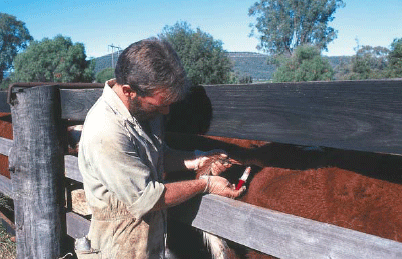
In using natural treatments, timing is critical as natural treatments rely on a functional immune system. But if the immune system is overwhelmed through factors such as transport stress or extreme weather, there is little chance for any treatment to work, let alone natural treatments. Animals that are carrying a burden of parasites will also have their immune system drawn down. Sometimes a single veterinary treatment is needed, essentially to re-set individual animals which are infested before they enter into the preventative management of an organic farm. The quarantine period is also an opportunity to boost immunity through mineral supplementation and supportive nutritional management after treatment.
Faecal egg counts for worms will help to justify decisions on whether there a need for quarantine drenching or not. If they are infested and nothing is done about it, environmental stressors will likely bring on complications. So be mindful: stop and observe your animals and take action as needed now, not later.
Organic certification requires that stock that is treated with veterinary chemicals is kept off organic certified land for three times the recommended withholding period for that product or a minimum of three weeks, whichever is longer. Significant withholding periods exist for eggs, milk and wool. Meat products from treated animals will not be certified organic. However the offspring of stock bought for breeding, if reared according to organic standards, will be able to be certified organic.
Organic standards classify the use of vaccines as 'restricted'. This means that their use is only permitted when it can be demonstrated by the organic farmer that a specific disease is endemic or is required by law. Verification from a veterinarian is needed. Full records of all treatments must be kept. For more detailed explanation; Use of vaccinations in organic farming [click here].
If an Animals Dies
Your local veterinarian can provide advice on finding the cause, and help you to minimise further losses and disease. Carcasses require prompt handling as they can be a hazard to the environment, other animals and provide the ideal habitat for disease vectors such as flies. Guidelines for proper carcass disposal must be followed. Ideally stock should be disposed of in a segregated area. If death was caused by a highly infectious disease contact your local animal health adviser for guidance.
Prevent Stock Feed Contamination
Great care must be taken with products used to feed livestock. A prominent example of this practice failing is the rise of Bovine Spongiform Encephalopathy (BSE) in UK cattle; it is called 'Mad Cow Disease'. When this is transferred to humans, it is called Creuzfeldt Jakobs Disease which is both incurable and fatal. BSE does not occur in Australia.
Because of the potential seriousness of an outbreak, it is against the law to feed 'Restricted Animal Material' (RAM) to ruminant animals – cattle, sheep, goats, deer, alpacas etc. RAM is any material derived from a bird, mammal or fish other than tallow, gelatin, milk or milk protein. RAM includes rendered products such as blood meal, meat meal, meat and bone meal, fish meal, poultry meal, feather meal, and compounded feeds made from these products, as well as unfiltered used cooking oil.
For those who keep pigs, feeding them animal by-products is also restricted. Viruses can withstand freezing, curing and boiling and can survive in meat even after it has been processed for safe human consumption. Feeding swill to pigs is considered the most likely way a foot-and-mouth (FMD) outbreak could occur in Australia. An outbreak will devastate whole industries. More can be found here: Swill Feeding [click here].
On-farm feed storage should also be scrutinized. Livestock feed is susceptible to contamination from rodent and bird excreta. Rats and mice are carriers of many diseases and can foul farm feed and water supplies helping to spread disease from contaminated to clean areas and from animal to animal. Although droppings are the most common method of disease transmission, diseases can also be spread via their fur, urine, saliva, remains and blood.
Organic standards require pest management practices to be implemented which prevent pest incursions. This includes removal of pest habitat, food sources and breeding areas, as well as removing areas where rodents can find cover from potential predators such as hawks.
Avert cross-contamination of feed with manure by farm equipment. Use a separate skid steer or loader bucket for manure, compost and feed operations or clean thoroughly before using on feed. Maintain clean water troughs, water bowls, and feed mangers.
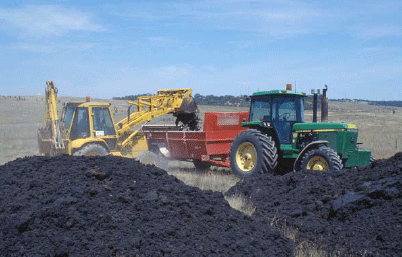
Compost, Organic Amendments and Manure
As well as a ban on directly feeding ruminants RAM, attention should be given to non-direct pathways where stock may ingest these products.
For organically certified lands where ruminants are managed, restriction on feedstock for composts includes prohibition of by-products of the meat industry, which may contain bovine or ovine products.
Organic Standards require that all manures, from both certified and uncertified sources, shall be composted prior to use on the production unit. To this end, using animal products or manures in composting or for soil amendments must be done competently and carefully. Refer to organic standards on the correct way to compost.
If you use compost or fertilisers that contain animal by-products, they must be fully incorporated into the soil prior to grazing access by ruminants depending on the volumes used and irrigation or rainfall intensity. A minimum of three weeks withholding is required assuming a rate of no more than 15 cubic metres of compost per hectare. If the rate is higher, the withholding period will need to be longer.
If you use that compost in situations where no ruminant animal can access it, there are no restrictions arising from the RAM feeding ban. For example, if you use it in your house garden, vegetable patch or around fruit trees, that is fine providing your fencing is sound and no ruminant animal can get to it. You should ensure that stock is also unable to access any compost that includes RAM while it is in storage or in the process of being made.
Note should be made of restrictions from some organic export markets, e.g. UK, in regard to prohibition on use of animal products such as blood and bone as fertiliser on cropping or livestock areas. Onus is on the operator to ensure compliance to other market requirements.
Slurries
Digestion of slurries must occur prior to application to certified farm lands, unless followed by green manure cropping. Actions prior to application must ensure that food safety and stock health risks are managed and eliminated.
WOOFERs, Contractors and Visitors
WOOFERS (Willing Workers on Organic Farms), backpackers and grey nomads travel far and wide and are mostly unaware of farm biosecurity. People, vehicles, equipment and clothing can transport infectious animal diseases. They may unintentionally carry pests and diseases from other countries, states or regions.
When they arrive, have a designated parking area with a wash-down area for cars where the wash-water can be contained along with any dirt and seeds. Wash down should take place off organically certified land. Footwear is a major risk: make sure boots are free of soil, mud or seeds. A footbath with disinfectant should be used.
Farm contractors work equipment should be treated with a farm-grade disinfectant. For livestock transporters, wash-down is essential and no co-mingling of livestock is important to retain organic status.
If it is necessary to drive around the property, only on-farm vehicles should be used.
New workers need an induction session that focuses on some simple biosecurity measures around the farm. Signs or posters to remind people to take care in appropriate areas on your property are recommended.
Employers have a legal duty to protect their workers against risks to their health that could arise through work-related activities, and must assess such risks properly.
Zoonoses are infections that can pass from animals to humans. All animals naturally carry a range of micro-organisms, some of which can be transmitted to humans, in whom they may cause ill health, which in some cases may be severe or life threatening. For example; anthrax, Q-fever, avian influenza, Hendra virus, E.coli etc.
An infected animal could be a carrier and show no obvious symptoms. Transmission may result from direct contact with a diseased animal, dung or urine, or through consumption of contaminated farm produce.
For more information on this important topic, see Livestock and Zoonoses [click here].
Disinfection in On-Farm Biosecurity
Choosing a disinfectant is a complex process. There is no one best product for all situations.
You must consider the disease risks about which you are concerned, the type of surface you wish to disinfect, the conditions under which the disinfectant will be used, and then select a disinfectant that best suits your needs.
When using a disinfectant, it is important to consider the following points:
- Most disinfectants will not work if the surface to be disinfected is not clean before applying the disinfectant.
- Organic materials such as soil, plant debris (e.g. straw), milk, blood, pus and manure inactivate some disinfectants or protect germs from the disinfectant's active ingredients.
- Wash boots, equipment or housing areas first with water and detergent.
- Use steam and high-pressure washers with soap to clean porous surfaces.
- It is important to select a disinfectant that will be active across a wide spectrum of germs under the conditions in which it will usually be used.
- Check the pH (acidity or alkalinity) of your water. Hard water can reduce or destroy the activity of some disinfectants.
- Consult with your organic certifying body and your local animal health adviser on the appropriate products to use for your situation.
- Cleaning products must be compliant with organic standards.
September 2012





